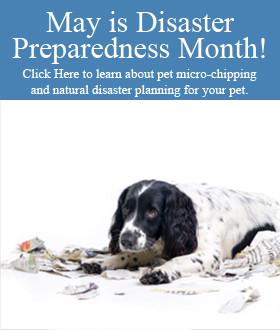We have a problem in this country, a crisis in animal overpopulation. In all areas including the city, country, suburbs, and your backyard are at times overwhelmed by dogs, cats, and even exotic birds and reptiles that have their roots in ancestors that were released from our homes both intentionally and unintentionally and allowed to adapt and breed indiscriminately. Once established as feral (having escaped from domestication and become wild), they compete with and often wreak havoc on populations of native animals. They also have the potential to spread disease to everyone including people. Finally, they affect us in our wallets, through the high budgets of tax supported organizations such as animal control.
The stories are in the media almost on a daily basis. Colonies of monitor lizards released when they grew too big are taking over Cape Coral and threatening both people and wildlife. Exotic tropical fish set free from our tanks are invading our endangered reefs, requiring costly removal efforts. Packs of feral dogs that used to be pets hunt our city streets much like the wolves in the wilderness. Exotic monkeys and birds that were too loud and too messy as pets are common in the outskirts of the Everglades. Feral cats that have their roots in non-neutered outdoor pets are dominating debates in local and state legislatures, arguing between supporting them and eliminating them. Welfare and rights organizations are spending vast amounts of money to sway the public’s opinion, as are environmental societies trying to preserve our valuable native resources. Let’s take a look at some of the arguments.
Feral animals don’t damage native wildlife: This fallacy is a common argument to preserve feral colonies, with organizations citing habitat destruction and chemicals as the primary causes of the depletion of wildlife. This may be true, but what is overlooked is that ferals are PART of the habitat destruction—a man made, artificially supported insult to the local environment. Studies have shown that feral animals (even well fed ones) kill billions of wild animals yearly, not only by predation but also by the spread of diseases such as Toxoplasmosis, which has devastated populations of seals in California and endangered native birds in Hawaii. Are they the biggest danger to native wildlife? No. But they are a significant part of it, and as such must not be ignored in our conservation efforts, for we must start somewhere. Efforts to support artificial ferals over native wildlife are in my view morally suspect, for if we are truly trying to be humane to the creatures in our care, we must be humane to all of them, non cute and cuddly wildlife included.
Feral animals lead happy, healthy lives, much like our pets: This argument simply defies logic. When was the last time your 100% indoor pet was hit by a car, or attacked by a wild animal, or went without food? The outside world is a brutish, violent place where animals suffer and die on a daily basis. True, ferals may live as long as outdoor pets, but for example studies have shown that indoor cats on average live over a decade longer than outdoor cats—if you could extend your beloved pet’s life a decade by simply keeping them inside, wouldn’t you feel obligated to?
Feral animals must be eliminated by capture and euthanasia: This argument from the other side doesn’t hold morally, either. If we are truly a humane, advanced society we must find a different way. To punish an individual animal for the sins of group (including the sins of the people who started the problem) is not logical, it is simply the most direct solution. However, the practice of encouragement and support of the feral colonies is not the answer, either, because these programs only work in ideal circumstances, with many well meaning people causing more harm than good through incomplete or misguided efforts. In addition, these programs are not uniformly applied—when was the last time a national organization called for a trap, neuter, and release program for innocent lizards?
So what is the solution? I believe it is a difficult one, requiring a shift in our society that may take generations to fulfill. We must as a society become more responsible towards our animals. The current philosophy of animals as disposable and replaceable must end. Once it becomes impossible to give away another litter of puppies at the local mall, people will control the breeding of their animals. Once it becomes anathema to abandon an animal on the side of a road or at a shelter, people will learn to work with pets that have become problems. Once people educate themselves about the many needs of their families and pets, fashionable breeds and exotic pets to be bought on a whim will disappear from our stores. Once our children are taught to treasure the creatures we live with and to make a lifelong commitment to them, both as pets and in the outdoors, future generations will not have to deal with overpopulation and damage from these feral animals.





































